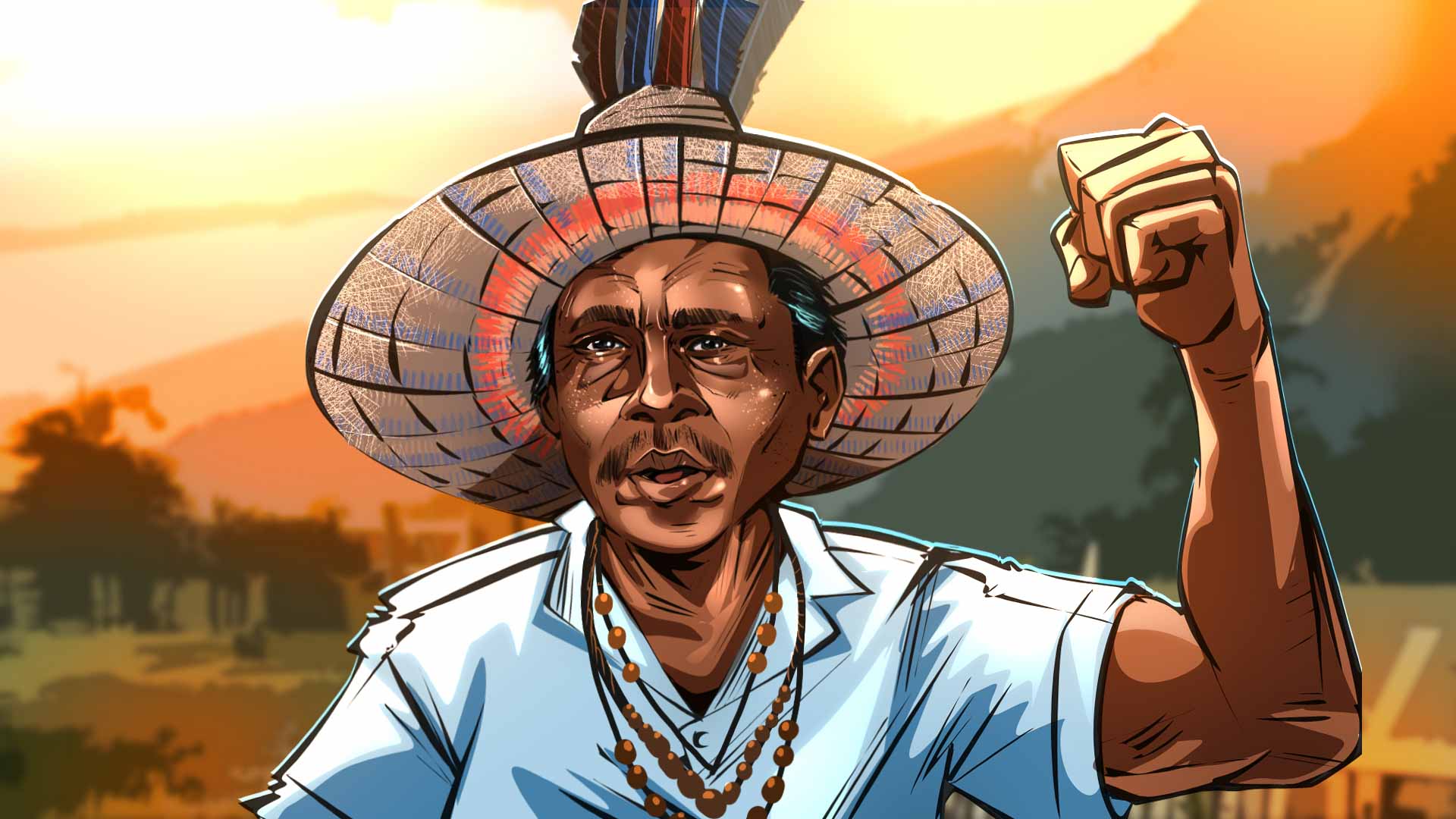

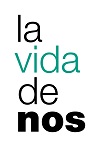
In discovering his identity, Juan La Rosa, a member of the Caquetío indigenous group, became an activist. In the company of his teachers, he witnessed and got involved in the fight to reclaim their ancestral lands from cattle farmers and transnational corporations. He saw many people die, including Yukpa leader Sabino Romero.

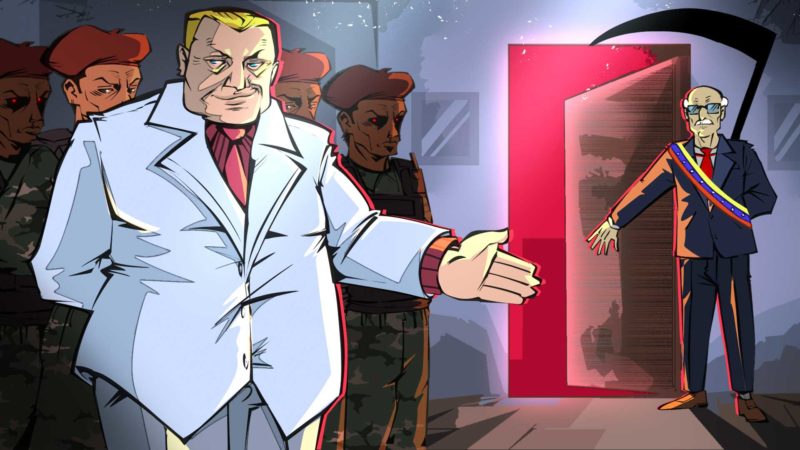 ILLUSTRATIONS: CARLOS LEOPOLDO MACHADO
ILLUSTRATIONS: CARLOS LEOPOLDO MACHADOCategorical and firm about his opinions, the Yukpa chief Sabino Romero gestured with his body as he defiantly said:
— “They can come down here and kill us if that’s what they want, but we are not going anywhere. We invaded this farm because we were going to starve to death up there in the mountains.”
Juan La Rosa, who was recording Sabino Romero with a small camera, interrupted the chief’s words to make a relevant semantic suggestion:
“If I may, don’t say that you invaded these lands: the correct thing to say is that you are reclaiming these lands.”
Back then, Juan La Rosa, from the Caquetío [Kaketí] indigenous people —living descendants of the Arawaks— had long been an activist. He wasn’t close to Sabino; in fact, he was meeting him that day for the first time because Lusbi Portillo, one of his teachers, had told him about him and his determination and had asked him to go and see him. But Juan was well acquainted with the history of the community to which Sabino belonged.
From 1920 to 1960, oil companies, transnational mining corporations, religious missions and livestock breeders progressively invaded the Yukpa ancestral territory, which stretched from the César River in Colombia to Lake Maracaibo in Venezuela. The forests of the Sierra de Perijá mountain range —located in the Andes, between Colombia and Venezuela— were razed, and cattle began to graze on the flat lands. Some indigenous groups left and settled in other parts of the country, while others became farm laborers or took refuge in the nearby mountains close to the Yaza River.
That was the case of Sabino Romero’s family. He grew up listening to the story of how his ancestors were stripped of their ancestral territory. The elder warned him to watch out because the cattlemen could kill him. So, as an adult, he set out to defend what had belonged to his people.
Or rather, that which still belonged to them.
His determination was further strengthened by the fact that, although the administration of Hugo Chávez began to grant them collective title to their lands in 2004, many of said lands, including some of those that they were being returned, were still occupied by breeders and transnational corporations that had been granted concessions for mineral exploitation.
Sabino took action and paved the way for them to return to their territories. That’s how he became the fiery social leader who was resolutely speaking to the camera from one of the reclaimed lands.
—“You’re right” — he answered Juan La Rosa, after a few seconds. The correct word is reclaim: we are reclaiming what is ours.”
Sabino Romero continued with the message that they would send to those who were planning on forcibly removing him from the territory:
—“We have reclaimed…”
He pronounced the word very slowly, emphasizing each syllable, directing a wink at Juan:
—“We have reclaimed the lands because they belong to us. The livestock breeders and the Venezuelan army forced us out of here at gunpoint. We want life to be Indigenous. We want the forests to be green again. We want cattle breeding to stop. We want the sacred, our rituals, and our way of life to be respected.”
And Juan La Rosa, watching such an indomitable spirit in action, came to understand why people referred to Sabino as a true force of nature, and it became clear to him that, for that very reason, Sabino was in danger.
And that he, as an Indigenous activist, might be in danger too.
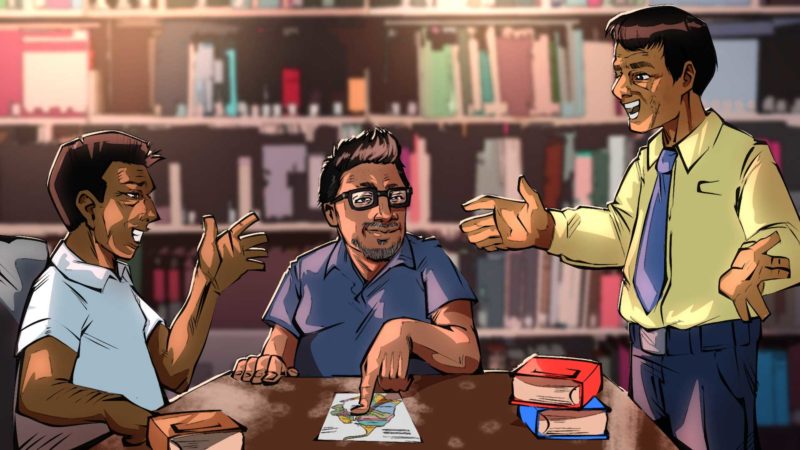
Juan, which in Arawak means the one who raises his voice, was, at the age of nine, a pretty quiet child. He was a late talker. And the elder, who worried about him as they did about any child who seemed to have trouble speaking, killed a chuchube —a small native bird— right on top of his head, in the hope that it would ‘loosen his tongue.’
It worked, but it took time for him to be heard loud and clear.
Juan was born in Paraguaná, which means land surrounded by water; it is a fishing village in the state of Falcón. His Kaketí family, like most Kaketí families, was mostly women. His grandmother, his mother and his aunts were magnificent storytellers. He was the first boy in his house. Juan grew up without his father, who was himself both a white man and the son of a Black man who lived in eastern Venezuela. He never met either. However, there was a male figure who was central to his upbringing and to the lives of the whole clan: grandfather Dámaso, a good-natured, jovial and approachable old man who specialized in land measuring and who used to draw and make paintings with obvious talent when he was young.
Identity was not an issue that Juan would address during his early childhood. At home they didn’t say ‘we are Indigenous’ or anything like that. They did had some customs, though, and the older ones spoke Caquetío; well, it was actually a couple of expressions that they used here and there, because the language had become extinct and no one spoke it anymore.
One day, Juan saw Dámaso sanding a piece of wood and asked him:
—“Grandfather: If my other grandfather is Black and my mother is an Indigenous woman just like you, does it mean that I am half Black, half Indigenous?”
—“What on earth are you talking about? You’re not half nothing. You’re Black and Indigenous through and through.”
The answer left him wondering, thinking, restless, filled with doubt.
What did it mean to be an Indigenous person? What did it mean to be Black? How could he be both at the same time? How come only a few expressions of his Caquetío language remained?
He began to do a lot of reading and asked himself more questions and tried to understand his past and his present. The years went by. During his adolescence, his mother —who was a teacher and a Caracas-trained activist — decided to go to El Pao, a mining town in the state of Bolivar, south of Venezuela, where her new life partner was from. She took Juan with her. Juan was enrolled in a high school full of children of state-run company workers.
And he felt different.
Or, rather, his classmates made him feel different.
He heard them make disparaging comments about how weird he was, about his mannerisms when he spoke, about the way he moved his shoulders, about his feminine demeanor. It’s true that the comments made him feel uncomfortable, but he didn’t pay much attention to them. Much later, at the age of 17, he realized it was part of his identity: “I grew up in an all-female setting, so it makes sense because I’m always surrounded by women. It’s part of my identity. I am a Caquetío,” he used to say to himself.
At some point, he began to read Marx and to assume himself as a left-wing militant. When he finished high school, he had many ideas going around his head and wished the world was a better, fairer place. He enrolled in the University of Zulia. He pursued studies in literature and, later on, when they opened the School of Design, in graphic design. He wanted to continue the education in plastic arts that he had initiated in another educational institution.
As soon as he arrived at the university, he went looking for the workers because he wanted to listen to them and understand them and support them. He wanted to do something. He wanted to change the world with them. Incidentally, he came across three professors in the School’s hall during one of his first days of class and they began to exchange lots of thoughts and opinions about different topics.
Like Juan himself, José Ángel Angel Quintero, Elpidio González and Lusbi Portillo came from Indigenous families. They worked with different Indigenous peoples in the Sierra de Perijá and La Guajira. They kept Juan grounded. They were older than him, had been left-wing militants, and had become disenchanted with an ideology that now seemed way too colonial and fake and utopian.
From then on and from time to time, they would meet to talk about stuff. Their conversations were long and deep and they eventually became friends. Juan learned to see them, more than as his professors, as his life teachers. They took him to the Sierra de Perijá and La Guajira to share with the local Indigenous people.
It was thanks to those trips, and all their conversations, that he found a path for himself in Indigenous activism.
It had been two years since he left home when he returned to Paraguaná with his three teachers to listen to what the elder, including his grandmother and his grandfather, had to say. The teachers and Juan made an inventory of the words the elder said, because Juan did not want his Caquetío language, which until then he did not know in depth either, to be lost forever.
That Juan who returned home was different from the one who had left it sometime before. “I only follow one land, one flesh and one blood,” he said. “I am an Indigenous person who is restoring his identity through social activism; in doing so, I am establishing a bond with the people with whom I am working and with my own history.”
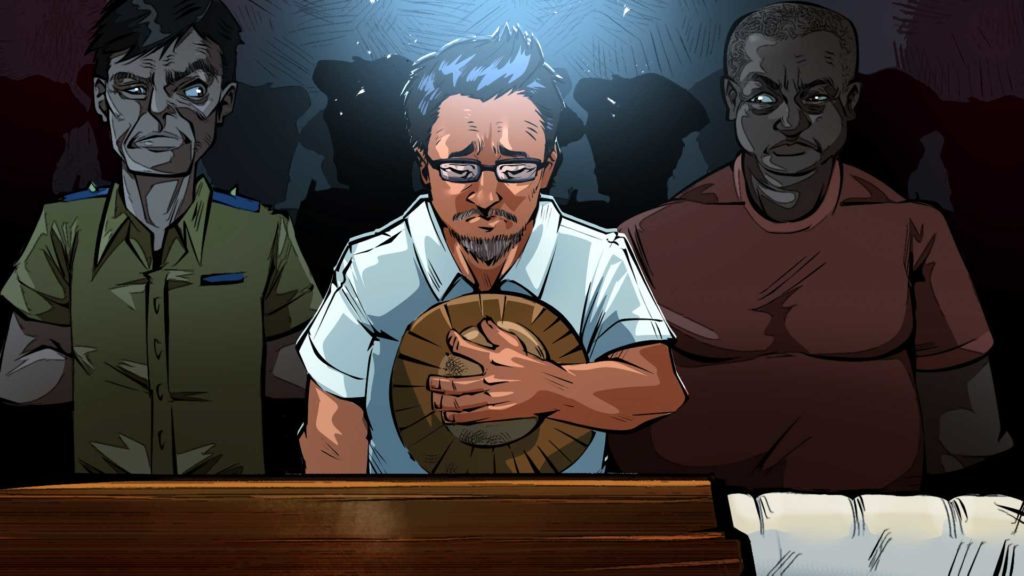
The day he recorded Sabino Romero, Juan La Rosa left those lands feeling that the people they were opposing, namely the livestock breeders, the military, the irregular armed groups and the businessmen who had been granted licenses to exploit the territories to extract minerals, were too powerful. But the knowledge that he was part of a fight for a larger purpose prevented his spirit as an activist from faltering.
Quite the opposite.
And it’s not that he had never thought of the risks he was taking. He had already seen the faces of those on the other side.
One day, Lusbi Portillo, showing great trust in his pupil, presented Juan with a challenge. The Barí, another indigenous people of the Sierra de Perijá, had also been dispossessed of their territories. Various administrations had granted land concessions over some 150,000 hectares for coal mining. It was Hugo Chávez’s first years in office, and another 56,000 hectares of land had just been granted to transnational corporations, and they were not willing to allow them to take it.
The Indigenous people defended those lands. They were doing everything in their power to make sure that the companies did not operate on their soil. They demarcated the terrain by themselves to keep the corporations from setting foot thereon. They denounced they had been taken away what was theirs. They refuted the premise that the land should always be productive.
—“Juancho… Why don’t you go to Caracas to fight this fight?” Lusbi suggested.
The Indigenous people had been scheduled a hearing at the Ministry of Energy and Mining, at the time under Alí Rodríguez Araque. For Lusbi, Juan was the right person to go to Caracas: not only did he know how to read maps and his way around the Sierra de Perijá because he had climbed it with him and the other old men on numerous occasions, but he also knew how to express himself. He knew how to frame an argument. And although Juan wasn’t sure if he met all the criteria for the task at hand and was certain that he would find it hard to navigate a city he didn’t know, he agreed to the trip.
He was greeted courteously. In the lobby, he ran into a large man escorted by bodyguards. When he heard him speak, he knew he was a foreigner. Someone told him that he owned a mining concession in Perijá; needless to say, he was not pleased at all. A few moments later, Juan was taken to the office of Minister Rodríguez Araque, where an official listened to him attentively, and left the hearing with a very valuable piece of information: the exact limits of the new concession.
He returned to Perijá as if he were carrying a trophy.
And it was no minor detail because they were able to pass on the newly acquired information to the communities, they held a meeting where the maps were displayed, and they rose their voices and complained and protested time and time again.
He continued fighting that fight of so many years; it was like there was no end to the conflict; it was a war where the number of deaths would keep on mounting.
It was the same fight that had led him to Sabino Romero, to whom he became closer and who saw him overcome many a hurdle.
Until the evening of March 3, 2013. Sabino Romero, while driving with his wife and son along a road in the Sierra de Perijá, was intercepted and shot dead by two men on a motorcycle.
Juan was at home in San Jacinto, a neighborhood in northeastern Maracaibo. When he heard the news, he felt heartbroken, but it didn’t come as much of a surprise to him because he had feared something like that could happen. His death was to be expected. Sabino, Lusbi and most of the Indigenous activists had long been receiving anonymous threats.
At the time of the murder, Lusbi was in Caracas, and he led a protest that was covered by the media. Juan followed suit in Maracaibo.
—“Go to the funeral for me, Juancho,” Luisbi told him when they spoke after the demonstrations.
—“You can count on it.”
There, in the Yaza bassin, with the streets swarming with policemen and the military, he got scared: everybody knew that Juan La Rosa was another activist and he felt he needed protection because someone could kill him. Trying to go unnoticed, as if he were walking through a minefield, he finally made it to the wake. He went to see the corpse —yet another one— of a man who had lost his life to that war for his ancestral land. A war of which he was already a survivor.
#EscazúYa is a campaign of Odevida and Sinergia, in partnership with La Vida de Nos, and part of the “Faces and Struggles Deep Inside Venezuela” project.
420 readings
I survived cancer to tell life with all its lights and shadows. I am a journalist-storyteller and a senior editor of La Vida de Nos, where I continously conjugate the verbs "believe" and "create." I am convinced that stories are a bridge where we meet others and ourselves.